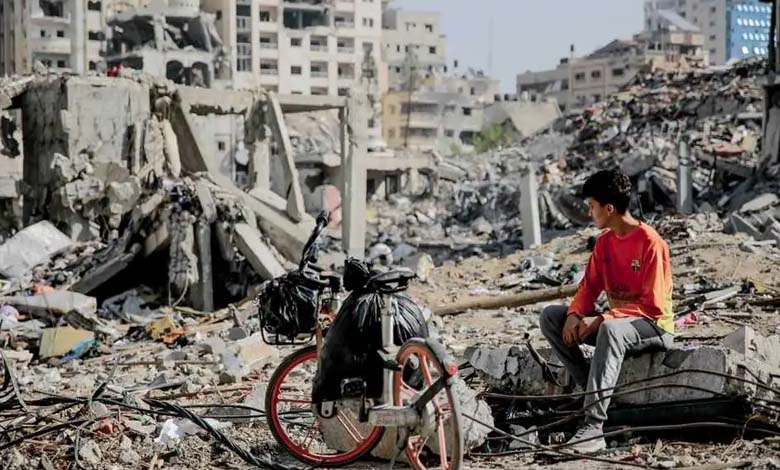Gaza destruction compared to Ukraine’s
The problem goes beyond the 37 million tons of rubble, including a large number of unexploded bombs

The United Nations has announced that the amount of debris and rubble to be cleared in Gaza is greater compared to Ukraine, representing a costly and significantly dangerous task in the narrow Palestinian territory due to the presence of unexploded bombs and asbestos material.
Mungo Burch, head of mine clearance operations for the United Nations in Gaza, stated today Wednesday that the amount of debris and rubble to be cleared in Gaza is greater compared to Ukraine.
During a press conference in Geneva, he explained that “to understand the magnitude of the issue, the front line in Ukraine is 600 miles long (about 1000 kilometers) while Gaza is no longer than 25 miles”, making it an entire combat front.
However, the problem is not limited to the 37 million tons of rubble, or 300 kilograms per square meter, according to estimates conducted by the United Nations in mid-April.
Burch added, “It is believed that these debris contain a large number of unexploded bombs, and cleaning them up will be more complicated due to other risks present in the rubble,” adding, “We estimate that there are over 800,000 tons of asbestos, just in Gaza’s wreckage,” this hazardous health material requires special precautions.
Estimates indicate that between 10 to 15 percent of munitions launched in conflict do not explode, thus constituting a constant threat to civilians.
Burch expressed hope that the United Nations Mine Action Service will ultimately “be able to serve as a coordination body for mine clearance in Gaza and establish our own teams for mine and bomb disposal”.
Regarding funding, the United Nations Mine Action Service has received five million dollars, but “to continue our work over the next 12 months, we need an additional 40 million dollars,” according to the UN official, but “the sector will need hundreds of millions of dollars over several years to make Gaza safe for residents”.
Two weeks ago, the main stakeholders in these future operations met in Amman, under the auspices of the United Nations Development Programme, which is responsible for overseeing the cleanup plan, to discuss the means and methods to be put in place when the time comes.
Burch asserted, “The problem lies in the unprecedented magnitude of the debris. We need to come up with new ideas on how to clear them.”
Pierre Loughammar, head of the UN Mine Affairs Service, confirmed that “65 percent of the destroyed buildings are residential.” During a regular UN press conference in Geneva on Friday, he pointed out that “their clearance will take 14 years” assuming the use of about a hundred trucks.
Burch admitted that “we are still in the planning stage,” as mine clearance operations require a large number of heavy equipment and trucks, noting that “the methodology for doing so is still under discussion due to its size”.
The UN Mine Affairs Service can particularly rely on its experience in Iraq, where Loughammar previously filled the same mission in Mosul, where it was necessary to clear 7 million tons of debris and rubble, but an accurate assessment of the situation in Gaza remains impossible due to the ongoing fighting and intense bombings and the inability to access.
Thus, “as long as we cannot access the north to conduct an assessment, we will not be able to estimate the extent of contamination” by unexploded bombs, according to Burch.
He noted that “the information we have indicates that the contamination is extreme in northern Gaza”, adding, “We believe this will pose a major problem in the future”.












